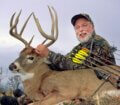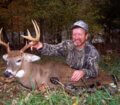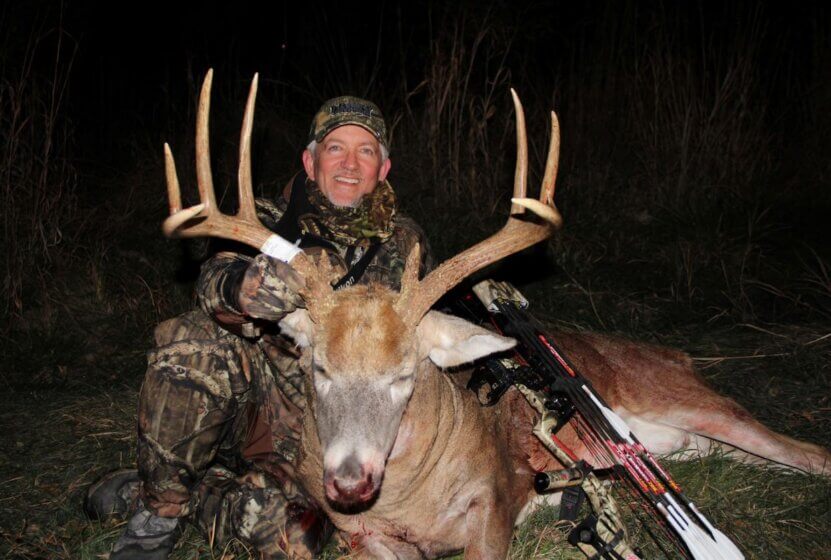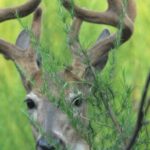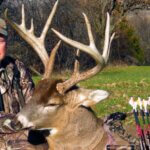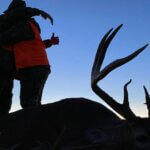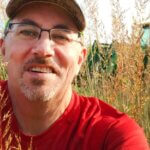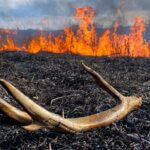Editor’s Note: What magic ingredients do the best deer hunters in the nation use to find their perfect tree stand sites? What can we learn from hundreds of years of deer-hunting experience that will help each of us pinpoint places in the woods where we can take big deer?
John in the Wild has interviewed seven of the nation’s top deer-hunting experts to learn the answers to these questions. We’ll ask each of them to describe the best tree-stand site he ever has hunted from and to name what ingredients have made that particular site so productive that he’s bagged a big buck from that spot in the woods.
Mark Drury Gives Advice for Hunting Midwestern Deer
Mark Drury, the co-owner of Drury Outdoors in Bloomsdale, Missouri, and the producer of several outdoor TV shows, has hunted for whitetails for almost four decades and hunts several states each season. “I like to hunt in the Midwest with its wide variety of habitats for deer,” Drury reports. “One of my favorite places to find a big buck is down in a deep hollow. However, a deep hollow almost always has a swirling wind that will carry your human odor throughout the hollow and let every buck in the hollow know where you are. Very rarely will you identify a hollow you can hunt in one specific direction.
“One time, I found a hollow but realized I couldn’t hunt this hollow with a south wind, a west wind, an east wind or a straight north wind. The only wind I could hunt that hollow with was a northwest wind. Luckily, when the weather turned cold in Missouri, we’d often get northwest wind. What made a northwest wind so important to hunting in this hollow was that the wind would blow from the bedding area into a field. You’d seldom ever have deer downwind of you if you were hunting with a northwest wind. From this particular stand site, I almost could see all the deer that walked down that deep hollow.”
“The creek bed at the bottom of the hollow created a perfect funnel to bring every deer in the bedding area right by my tree stand.”
“One year, this region had a northwest wind and an unusually cold front with 25-mile-per-hour winds. When I saw that all the conditions were right that day, I decided to go down to the stand that we’d named the Dry Creek Funnel late in the afternoon to catch the deer coming from the bedding area and going to the field. At 4:15 pm, I spotted this huge buck, a massive 12-pointer with 20-inch-wide main beams, scoring 160 points on Pope & Young. The buck came toward the stand walking very slowly. When he was 12-yards from the tree, I took a shot at this really-nice buck.
“This stand is one of my all-time favorites because my brother Terry and I have taken three bucks, each scoring 125 points or better on the Pope & Young, from this stand. A deer in this hollow will walk under this stand on the way to the field to feed in the agricultural field at the base of the hollow. If you only hunt that stand in the afternoons with a northwest wind, you generally can see every bed in that hollow. The hollow has produced some very-nice bucks for us.”
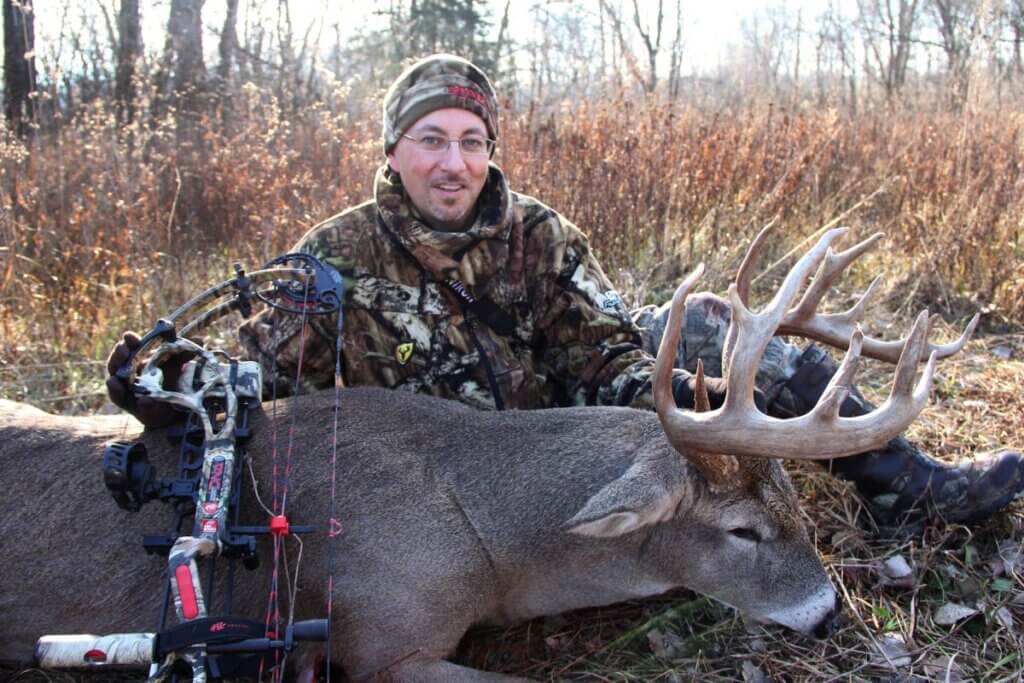
Will Primos Discusses His Cane Thicket Deer Stand
Will Primos, of Flora, Mississippi, the creator of Primos Hunting Calls, produces the “TRUTH Series” videos. He has hunted deer for about five decades. “I was hunting deer in the rut in a creek bottom where I knew some big bucks were living,” Primos mentions. “I wanted to pick a stand where I could force a buck to look for me instead of my having to look for him.”
“Because I was hunting deer during the rut, I knew that the bucks could be anywhere. They didn’t necessarily have to follow any trail.”
“The stand I picked was on the edge of a steep creek bank with a cane thicket growing there. I knew that when I called, and a buck came in and saw that thick cane, he’d assume that the buck that made the grunt was inside of the cane. He would have to come around the cane thicket to see that other buck.
“I spotted this buck at 140-yards away and called him using a Power Buck and Doe grunt call. The buck was crossing a CRP field next to the creek. The first time I grunted at him, he stopped and looked at me. But then he kept on walking. I made an estrous bleat. The buck threw his head up and started running toward me. He was at 60 yards when I called him the last time. He came straight to me, looking for that deer that was calling since he couldn’t see into the cane thicket.”
Related Deer-Hunting Gear
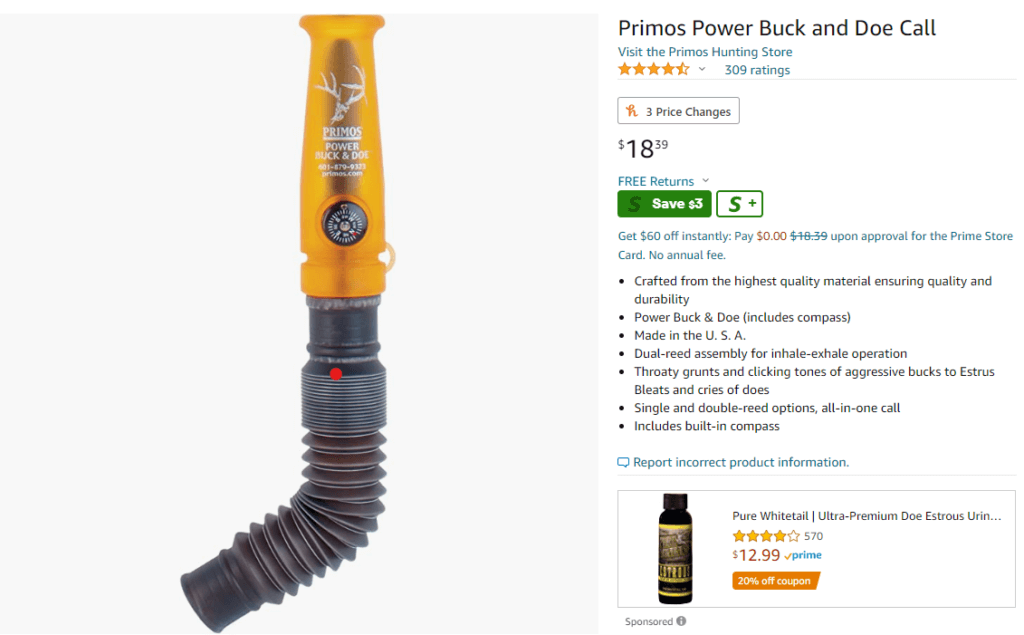
“When the deer was at 20 yards, my only shot was a head-on one. But I felt comfortable making that shot because I’d made it before. I hit the deer right in the throat, and he whirled, ran about 70 yards, and dropped. The buck was an 8-point that scored 140 points on Pope & Young. I really liked this stand site because the cover was so thick around and behind me. I knew that when I called to the buck, he would have to come to look inside that thicket to find the deer that was calling to him.
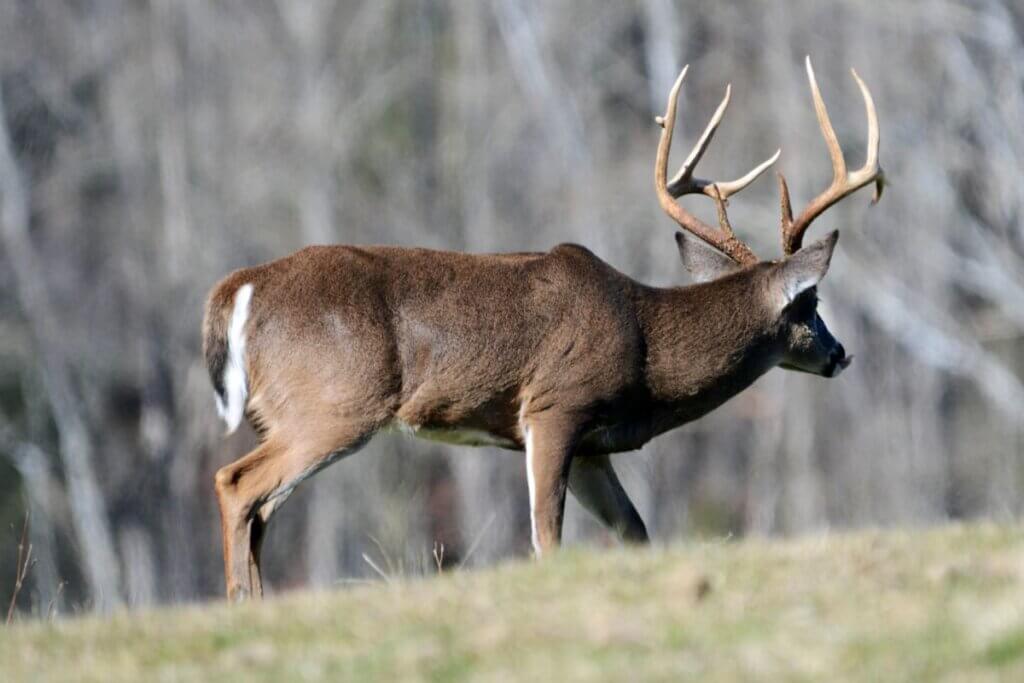
“One of the biggest mistakes a hunter makes when calling deer is taking a stand without a thicket under or close to him. If a buck hears a deer calling and looks down into the woods and doesn’t see the deer calling to him, he will get spooked. But if a buck spots a thicket that may hold a deer, then he usually will come in, get close to that thicket, and assume that the deer that has called is inside the thicket. I really like to call deer and feel like I’ve had a successful hunt when I can call a buck and make him come to look for me.”
More Deer Hunting Advice from Pros You Know in John’s Books
John E. Phillips’ latest deer book, “How to Hunt Deer Like a Pro: Volume II,” is now on Amazon! The Audible version should be available by December 2022.
Since deer hunting and deer hunters are drastically changing each year, John interviewed some top deer hunters like Mark Drury, Dr. Larry Marchinton, Dr. Bob Sheppard, Pat Reeve, Gene Wensel, Cody Robbins, Ernie Calandrelli, Brian Murphy and Luke Brewster, who took the world’s largest whitetail, to learn their up-to-date techniques for successfully hunting deer and having more places to hunt.
Also, John’s first book in that series, “How to Hunt Deer Like a Pro” (in Kindle, print, and Audible), includes other outstanding deer hunters.
Too, check out John’s book, “Bowhunting Deer: the Secrets of the PSE Pros,” available now in Kindle, print, and Audible versions.
When you click on these books, notice on the left where Amazon says you can read and hear 10% of the Audible books for free. You can click on Buy the Audible book on the right side of the pages and below the offer for a free Audible trial.
Tomorrow: Prepare Deer Stand Sites in Funnel

